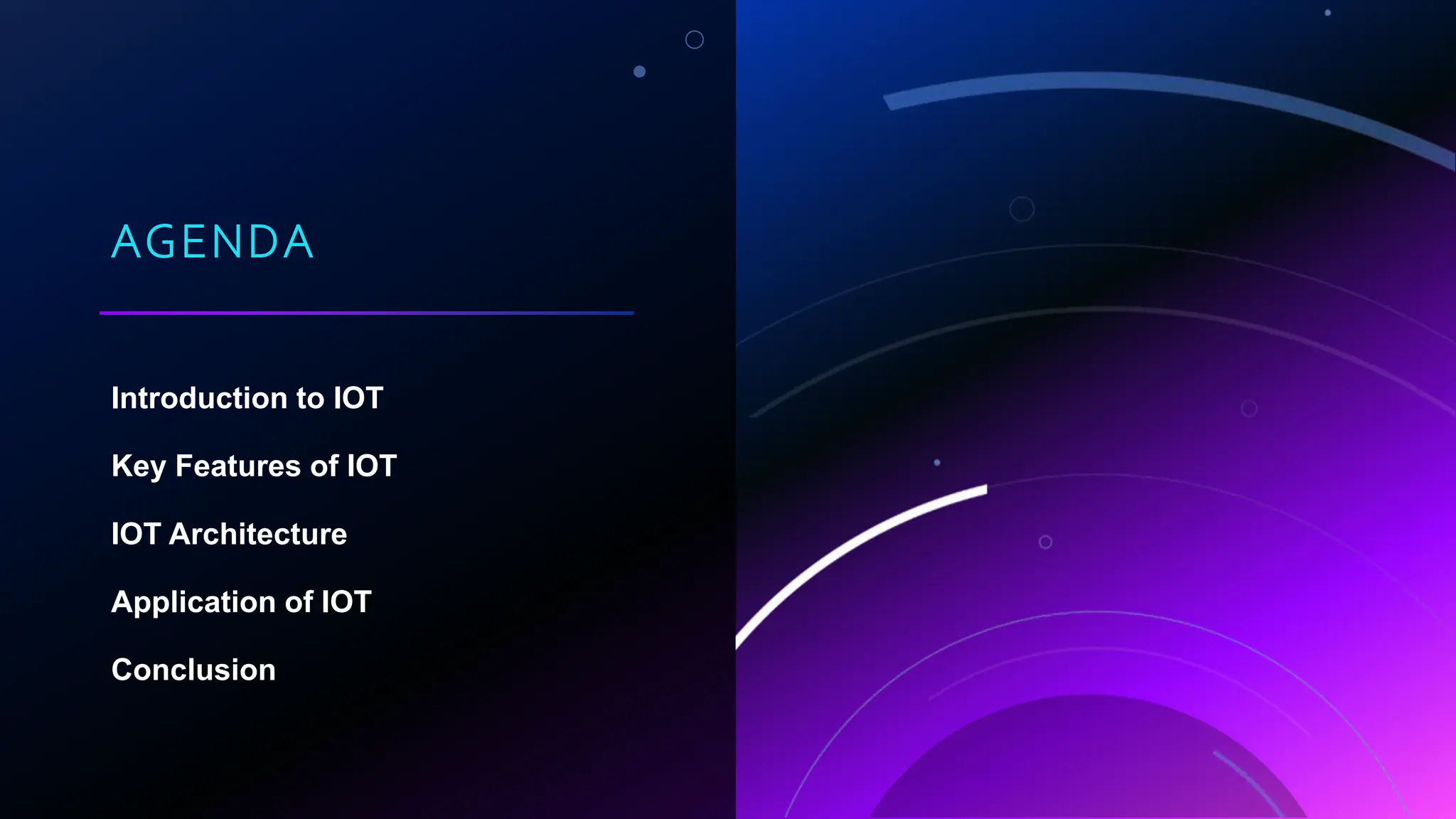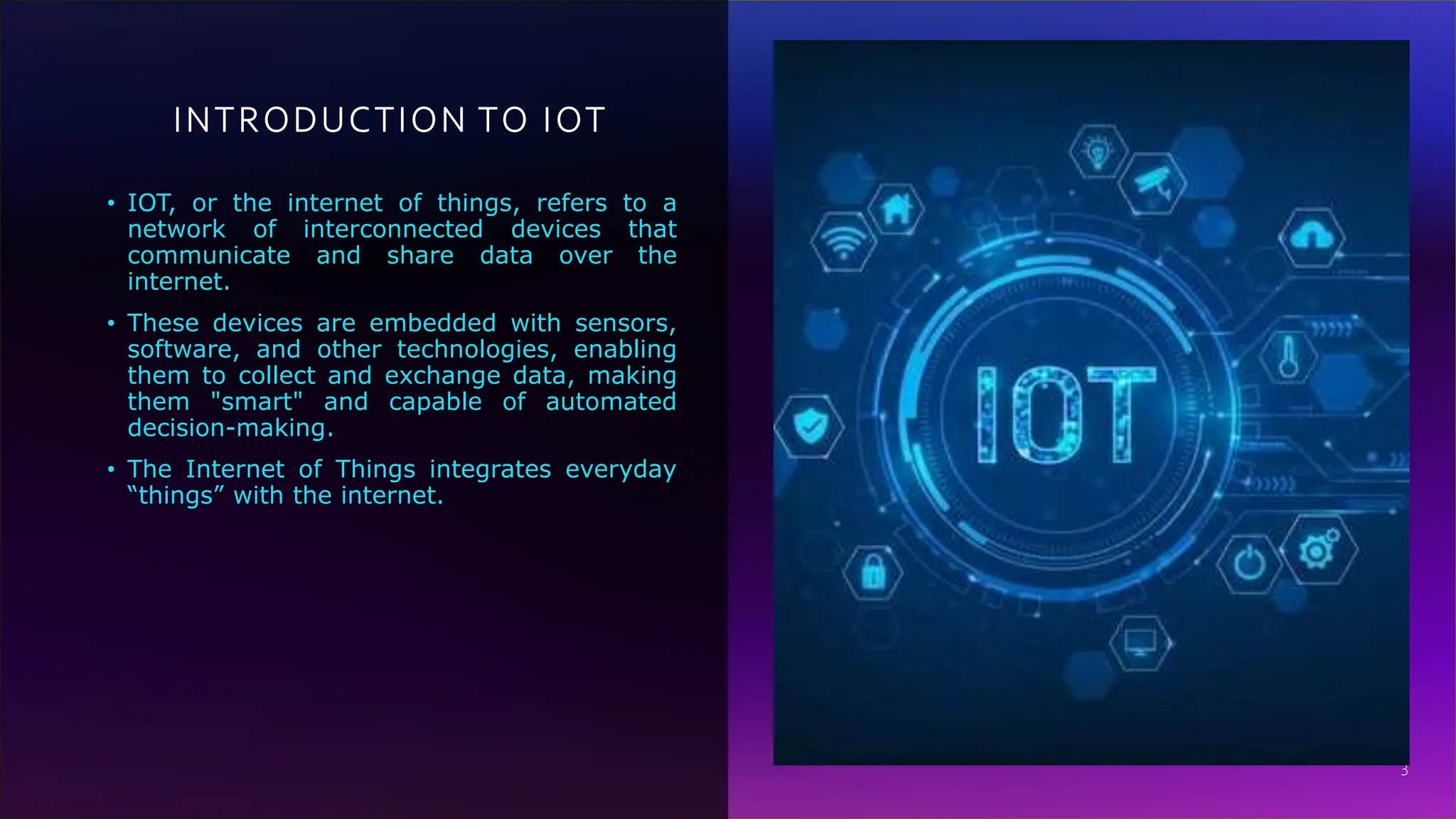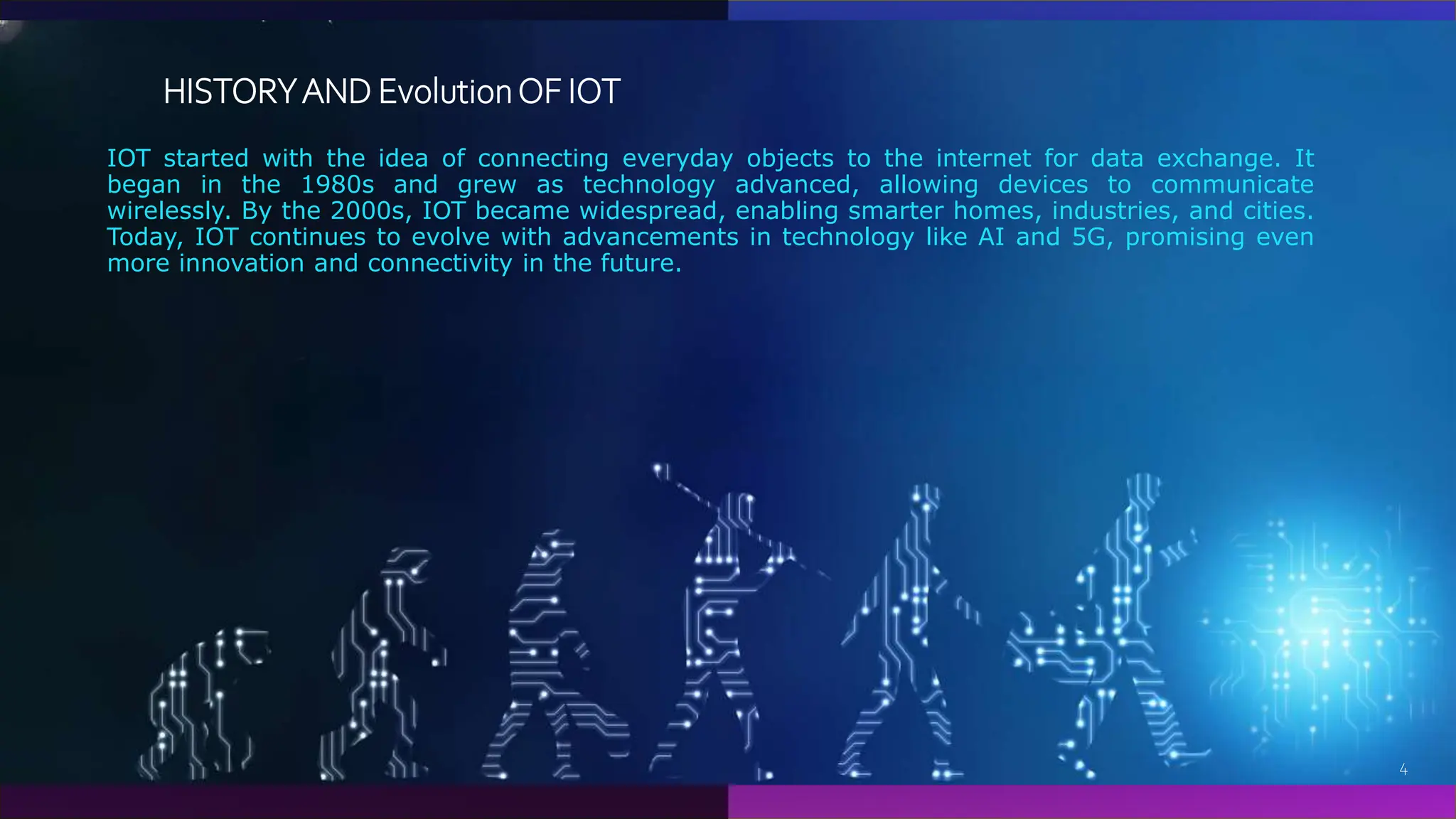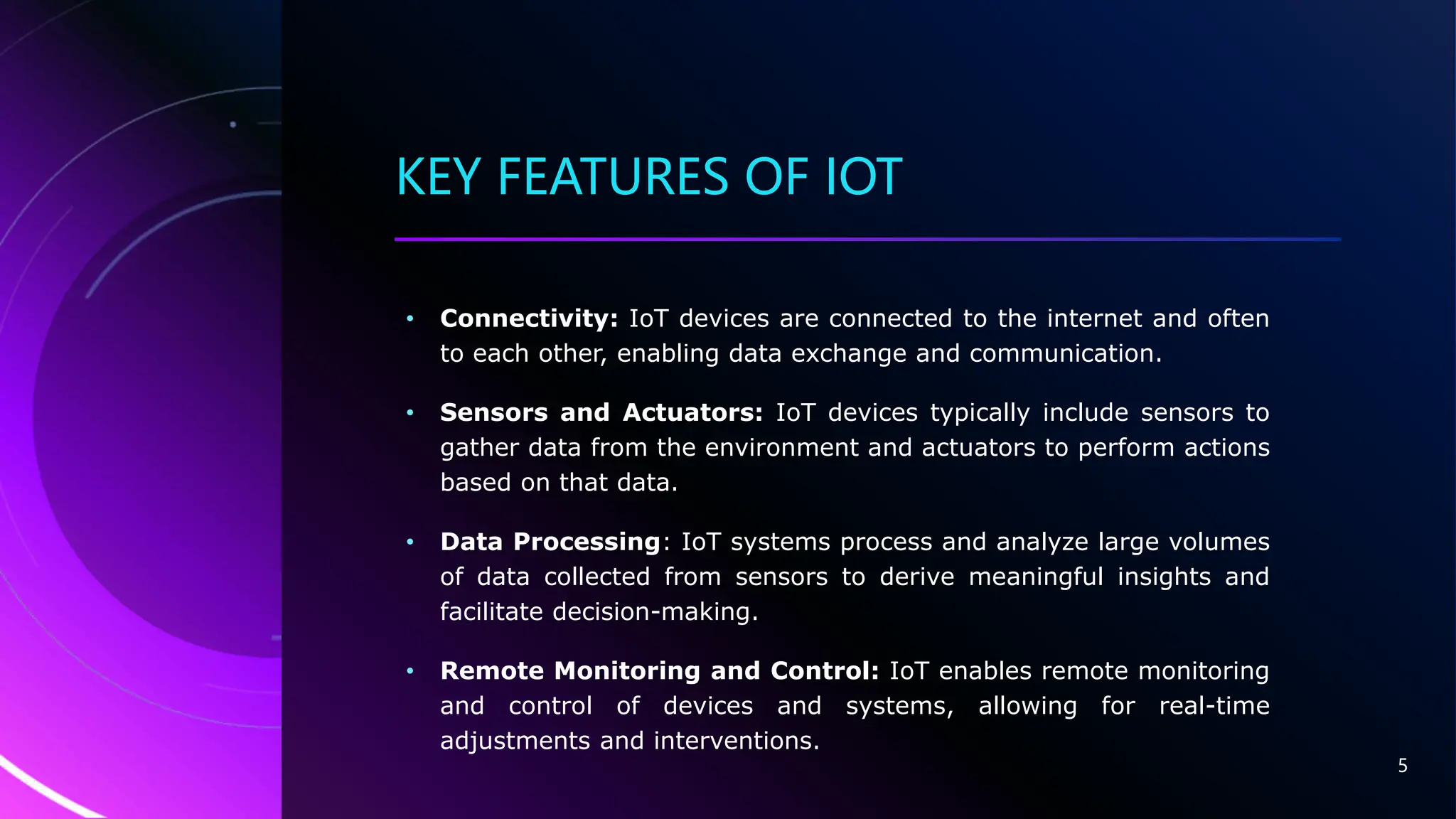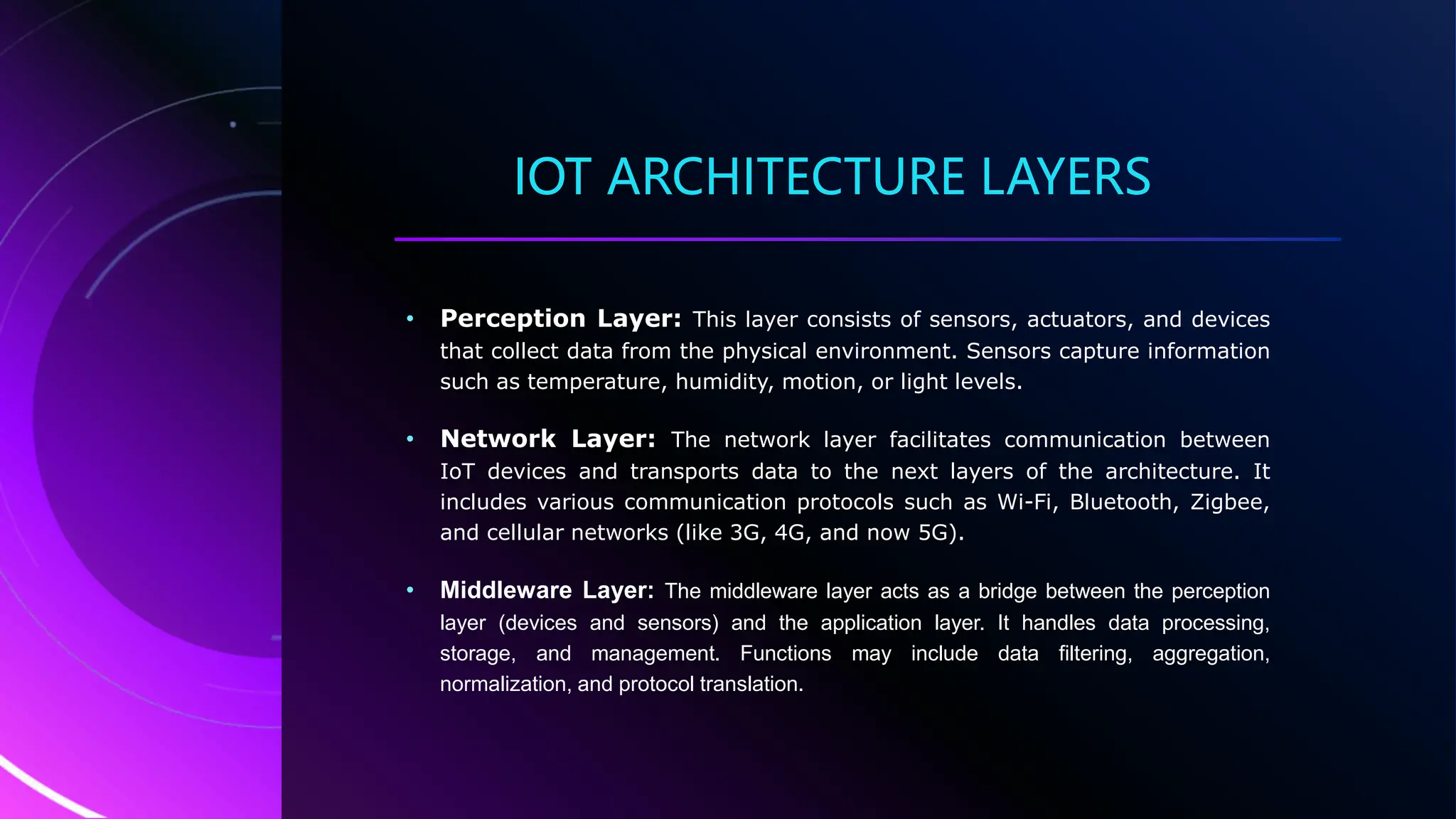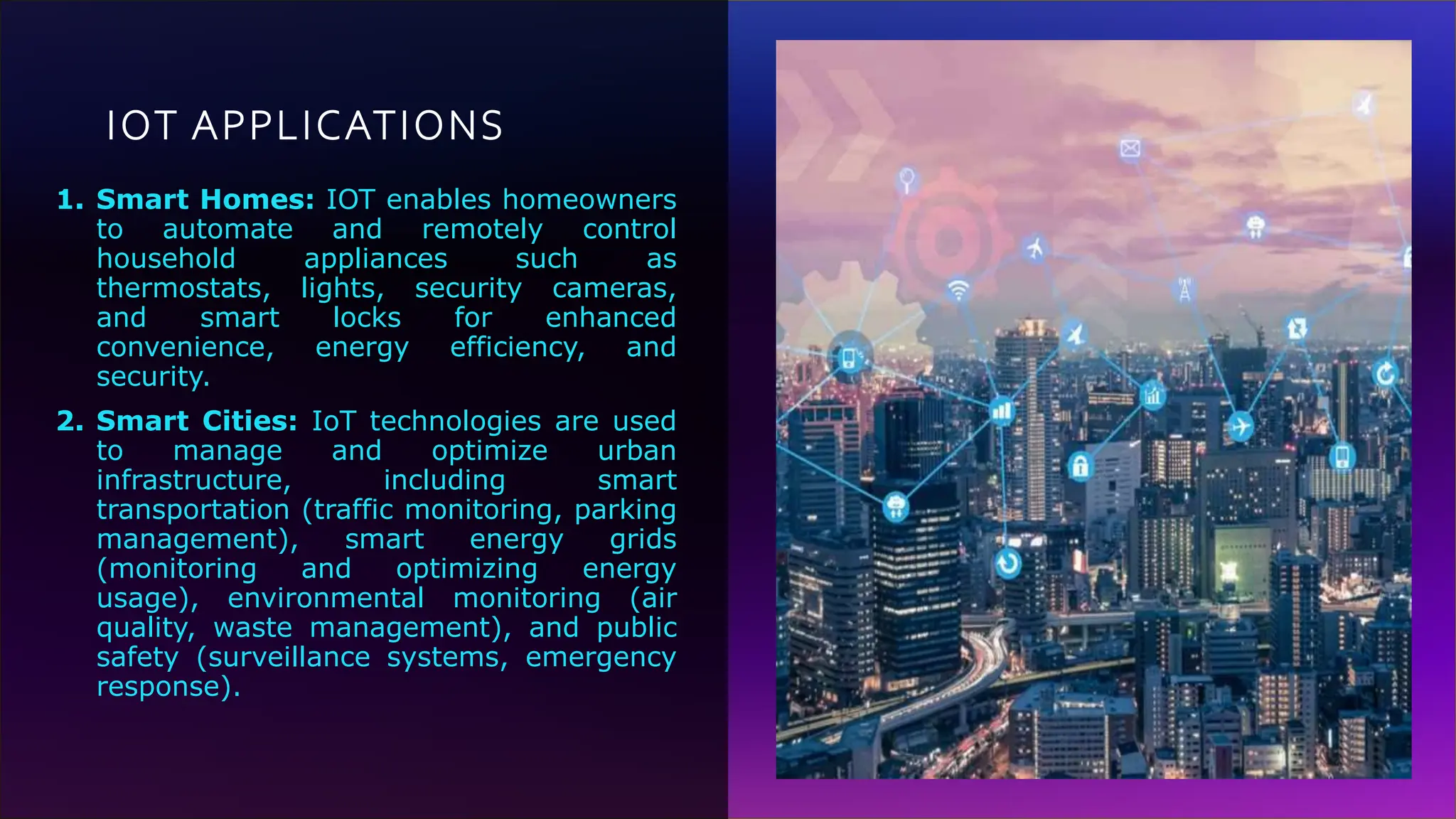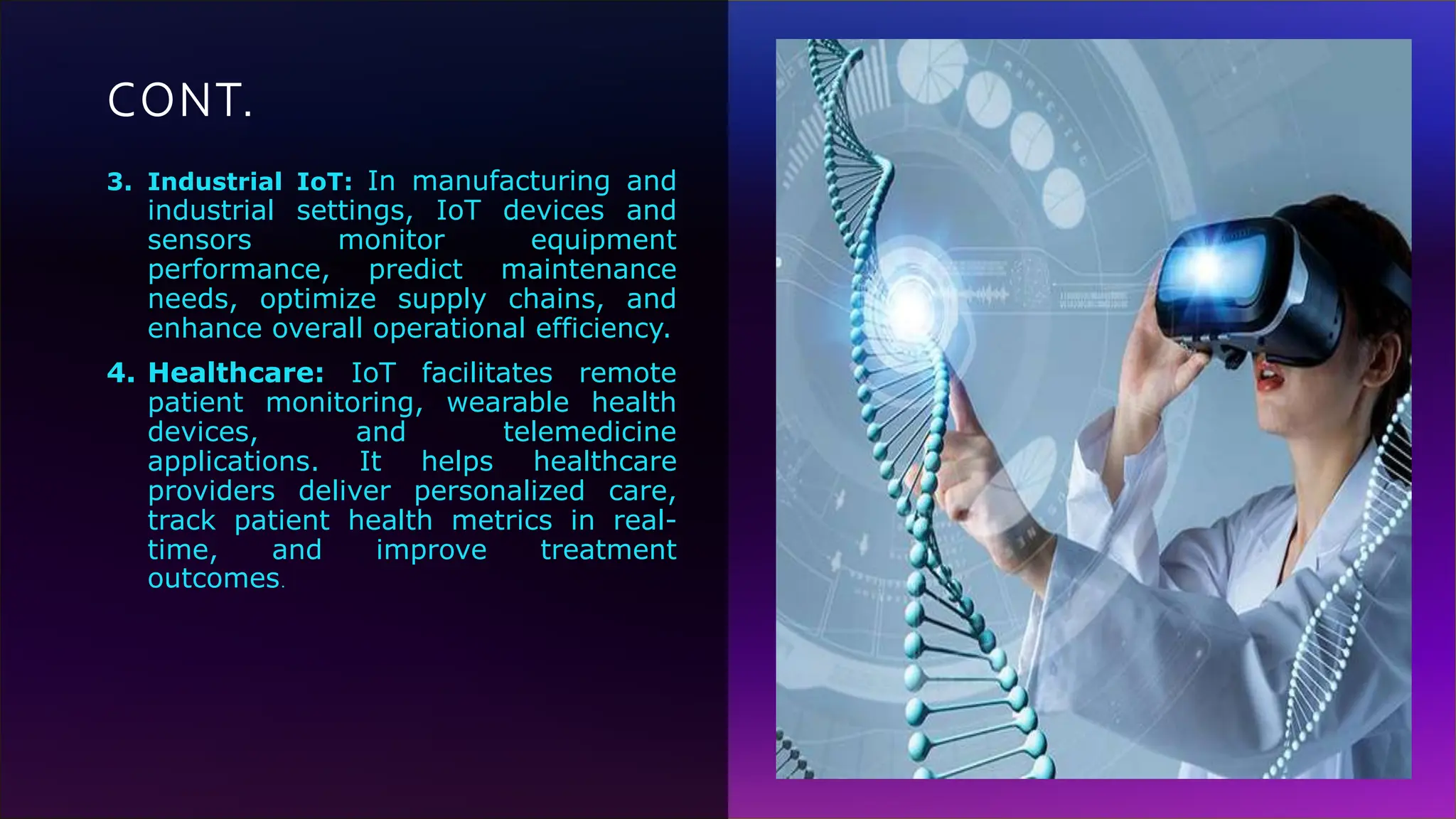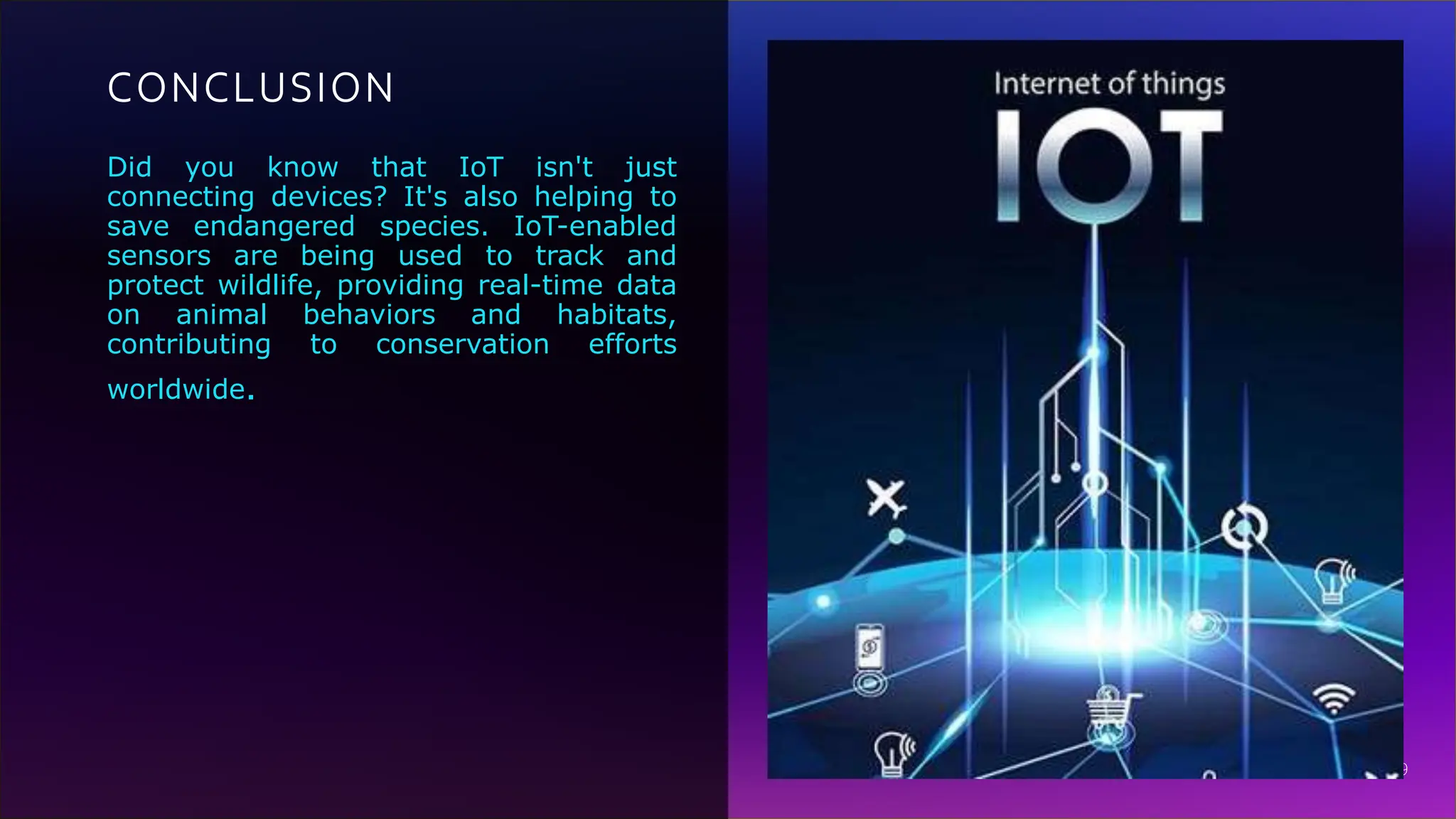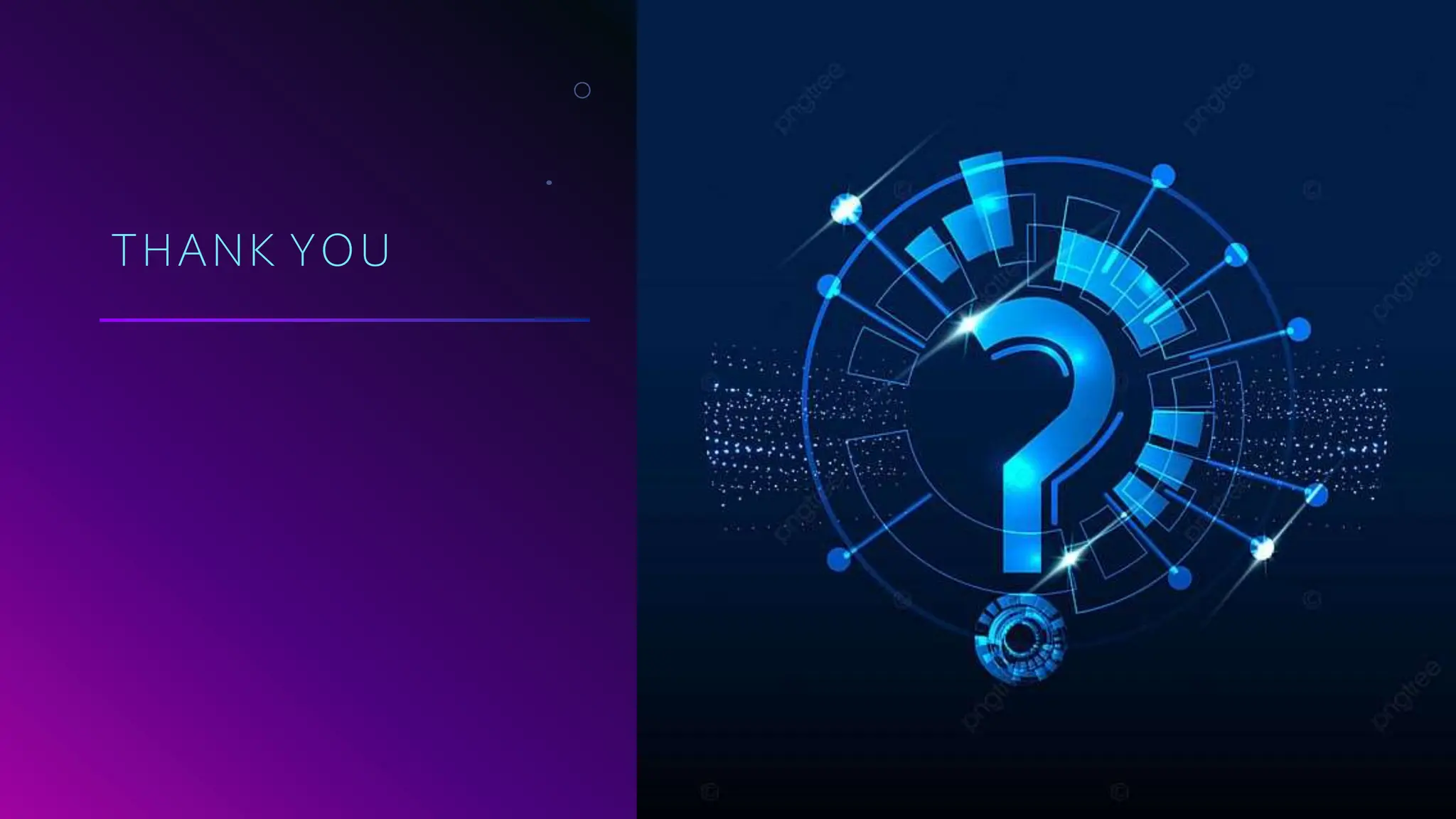The document introduces the Internet of Things (IoT), describing it as a network of interconnected devices capable of data exchange and automated decision-making. It highlights key features and architectural layers of IoT, and discusses various applications including smart homes, smart cities, industrial IoT, and healthcare. The conclusion notes IoT's role in conservation efforts by tracking wildlife with sensors.

